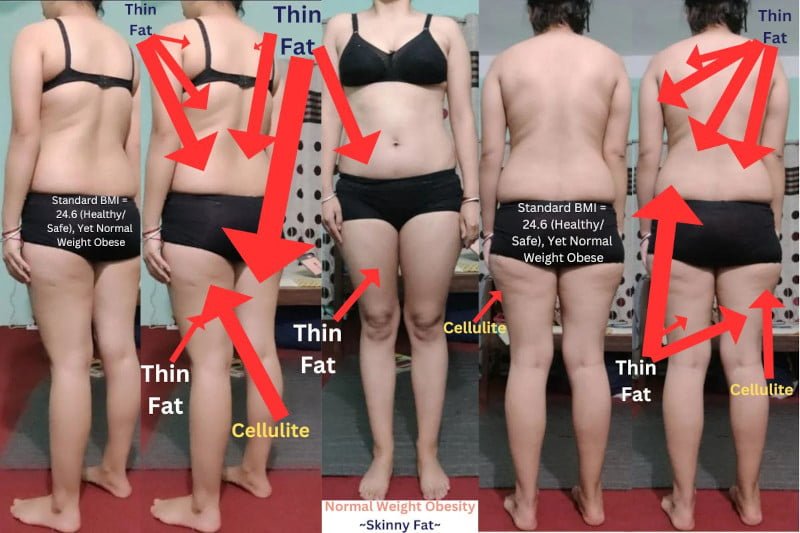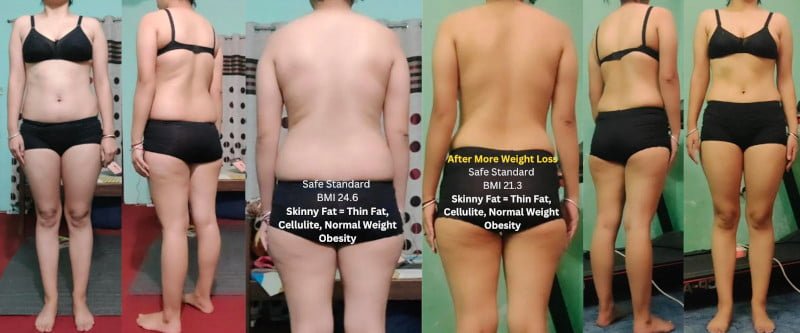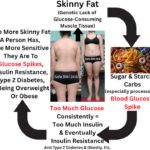Muscle Mass Percentage Men – Skinny Fat Question
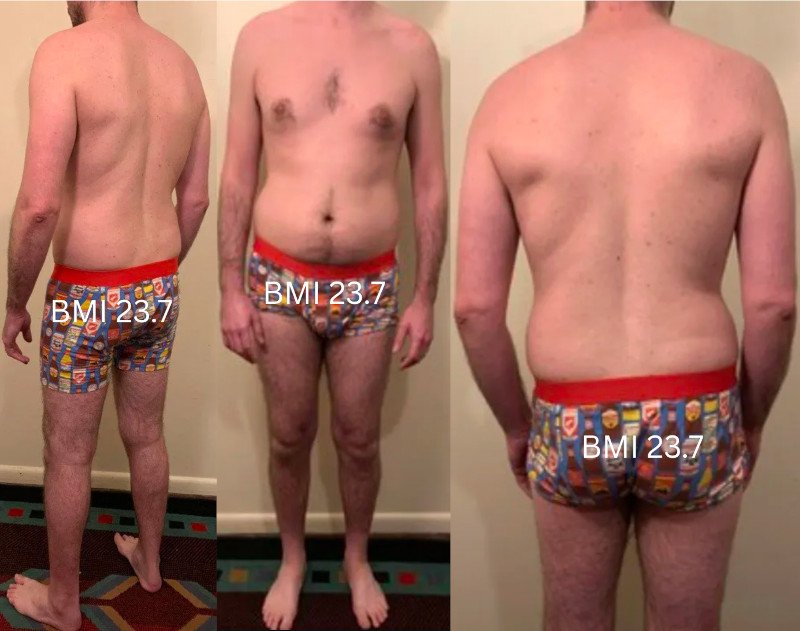
 Greetings. I am a 31-year-old male. My BMI is 23.7. How do I know if I have a normal muscle mass percentage compared to other men? My doctor told me that for the most accurate results, I need an MRI scan. But my insurance won’t cover it. I can’t afford it out of pocket. How is muscle tissue measured? What is the average muscle mass percentage for men? A Google search is vague, and my doctor could not offer any solid answer either, which is odd.
Greetings. I am a 31-year-old male. My BMI is 23.7. How do I know if I have a normal muscle mass percentage compared to other men? My doctor told me that for the most accurate results, I need an MRI scan. But my insurance won’t cover it. I can’t afford it out of pocket. How is muscle tissue measured? What is the average muscle mass percentage for men? A Google search is vague, and my doctor could not offer any solid answer either, which is odd.
I have never been particularly muscular. Even when my diet, exercise, and lifestyle were healthier. Genetics makes a lot of sense. Your site has taught me a lot about skinny fat. I did not realize that maybe I am experiencing low muscle tissue, and it could be due to my genetics. I have always been told that my low muscle tissue on my midriff, abdomen/belly, middle back, lower back, and lower side trunk/love handles is due to my questionable diet, exercise, and lifestyle.
A friend told me that a DEXA scan is the way to go, but an online Google search indicates that DXA is more for bone density and less accurate when it comes to muscle tissue or fat tissue. Is this true? How do I accurately measure my muscle tissue without breaking the bank?
Muscle Mass Percentage Men – Skinny Fat Question
Your research is correct. DEXA/DXA is the bone density gold standard. However, it is not (1, 2, 3, 4, 5, 6, 7) an accurate measure of muscle tissue (lean body mass/LBM) or fat tissue. It cannot discern the difference between regular white/yellow fat, brown fat, or beige fat. It cannot differentiate between muscle tissue — genetic or added via resistance/exercise — and lack of genetic muscle tissue (skinny fat) (8, 9, 10). Nor can it tell the difference between regular fat and skinny fat. It can give a very rough estimation of regular body fat and lean mass, but even then, accuracy is clinically questionable and unreliable, at best. The same is true for InBody machines and the like.
 Your doctor is right, the most accurate way to measure muscle tissue is via an MRI machine. A specific MRI scan is the gold standard. However, as of November 12, 2025, there is no standard muscle tissue measurement. Unlike standards for healthy blood pressure (120/80), heart rate (60-100 beats per minute), cholesterol (total less than 200 mg/dL), A1C (less than 5.7%), Body Mass Index (BMI, 18.5 to 24.99), and the like, science/medicine has no standard way to measure the total genetic muscle tissue you are born with, or without (skinny fat). Just as there is no standard way to measure added muscle mass via resistance/exercise. And, even if either of those standard measurements did exist, there is no standard average muscle tissue measurement relative to height and gender to compare it to. Thus, at this time, there is no accurate, standard way to measure muscle tissue in any capacity.
Your doctor is right, the most accurate way to measure muscle tissue is via an MRI machine. A specific MRI scan is the gold standard. However, as of November 12, 2025, there is no standard muscle tissue measurement. Unlike standards for healthy blood pressure (120/80), heart rate (60-100 beats per minute), cholesterol (total less than 200 mg/dL), A1C (less than 5.7%), Body Mass Index (BMI, 18.5 to 24.99), and the like, science/medicine has no standard way to measure the total genetic muscle tissue you are born with, or without (skinny fat). Just as there is no standard way to measure added muscle mass via resistance/exercise. And, even if either of those standard measurements did exist, there is no standard average muscle tissue measurement relative to height and gender to compare it to. Thus, at this time, there is no accurate, standard way to measure muscle tissue in any capacity.
Any percentage estimations that you find online — anywhere — those estimations are nothing more than gross assumptions that are not backed by any real study data from real human subjects. For all intents and purposes, they mean very little if anything. You may as well flip a coin. Every human body is a unique genetic creation. Some people are born with more muscle tissue, some less, and everything in between.
How To Accurately Measure Muscle Mass Percentage – Men and Women
This does not mean a muscle measurement standard is not possible. It is very possible. Our MRI Study (11) is working on developing such a standard. Once we successfully complete our MRI Study, the new muscle tissue measurement standard will allow for no less than the accurate:
1 – measurement of total genetic muscle tissue,
2 – average muscle tissue measurement relative to height and gender (for comparison),
3 – diagnosis of skinny fat (lack of genetic muscle),
4 – tracking of added muscle mass via resistance/exercise,
5 – tracking of muscle atrophy via poor diet, exercise, and lifestyle,
6 – tracking of sarcopenia via aging, and
7 – calculation of metabolism (BMR/TDEE).
Please stay tuned, as we are avidly working on funding and anticipate starting by January 2026.
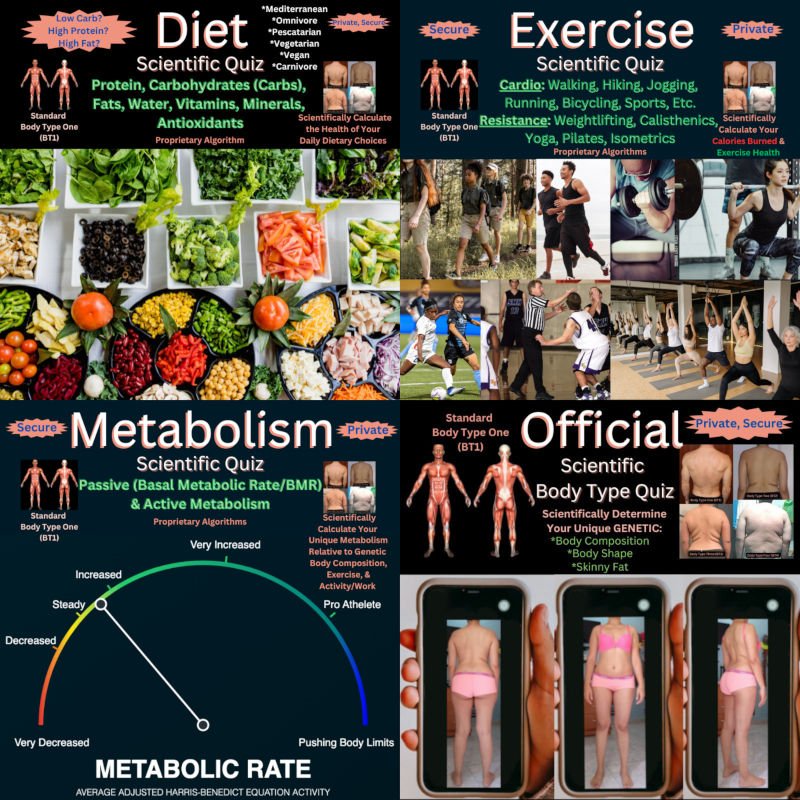 In the meantime, check out our Scientific Health Quizzes. Using the latest science, we have developed a user-friendly way to accurately determine body composition (especially skinny fat) along with healthy metabolism, diet, exercise, and lifestyle to help you better understand your overall health. Accounts are free, secure, private, and anonymous. Free options are available.
In the meantime, check out our Scientific Health Quizzes. Using the latest science, we have developed a user-friendly way to accurately determine body composition (especially skinny fat) along with healthy metabolism, diet, exercise, and lifestyle to help you better understand your overall health. Accounts are free, secure, private, and anonymous. Free options are available.
References
- Nature, Scientific Reports: Changes in DXA-derived lean mass and MRI-derived cross-sectional area of the thigh are modestly associated, July 11, 2019, Dallin Tavoian, Kwasi Ampomah, Shinichi Amano, Timothy D. Law, and Brian C. Clark. https://www.nature.com/articles/s41598-019-46428-w
- NIH, National Library of Medicine: Dual-Energy X-Ray Absorptiometry: Research Issues and Equipment, 1997, Wendy M. Kohrt. https://www.ncbi.nlm.nih.gov/books/NBK233779/
- Journal of Applied Physiology: Percent body fat via DEXA: comparison with a four-compartment model, February 1, 2003, Grant E. van der Ploeg, Robert T. Withers, and Joe Laforgia. https://journals.physiology.org/doi/full/10.1152/japplphysiol.00436.2002
- UC Davis Health, Sports Medicine: DXA body composition analysis, https://health.ucdavis.edu/sports-medicine/resources/dxa-info
- MedlinePlus: Bone Density Scan. https://medlineplus.gov/lab-tests/bone-density-scan/
- Cleveland Clinic: DXA Scan (Bone Density Test), May 28, 2024. https://my.clevelandclinic.org/health/diagnostics/10683-dexa-dxa-scan-bone-density-test
- Wikipedia: Dual-energy X-ray absorptiometry, https://en.wikipedia.org/wiki/Dual-energy_X-ray_absorptiometry
- Skinny Fat Science: What Is Skinny Fat?, July 26, 2024. https://skinnyfat.fellowone.com/skinny-fat-science/what-is-skinny-fat/
- Skinny Fat Science: Is Muscle/Mass Genetic and How Does It Affect Skinny Fat?, November 20, 2024. https://skinnyfat.fellowone.com/skinny-fat-science/is-muscle-mass-genetic-and-how-does-it-affect-skinny-fat/
- Skinny Fat Science: Is Skinny Fat Genetic?, November 27, 2024. https://skinnyfat.fellowone.com/skinny-fat-science/is-skinny-fat-genetic/
- Skinny Fat Science: Scientific Skinny Fat MRI Study – Proving What Skinny Fat Is, March 26, 2025. https://skinnyfat.fellowone.com/skinny-fat-science/scientific-skinny-fat-mri-study-proving-what-skinny-fat-is/

